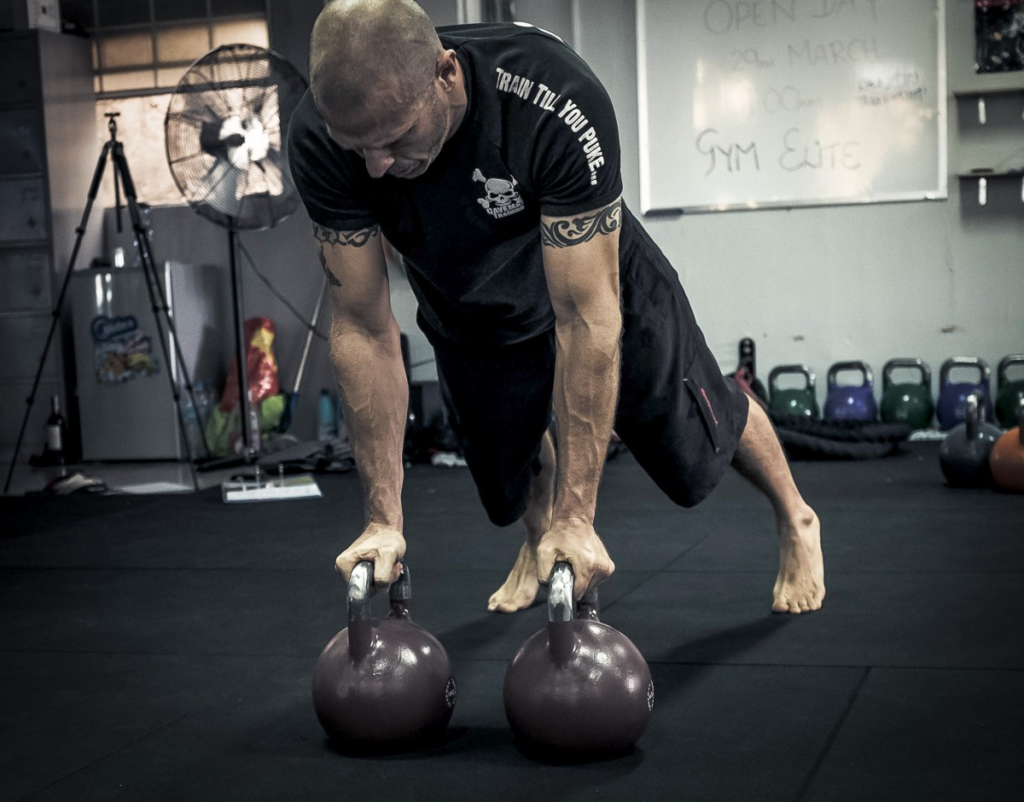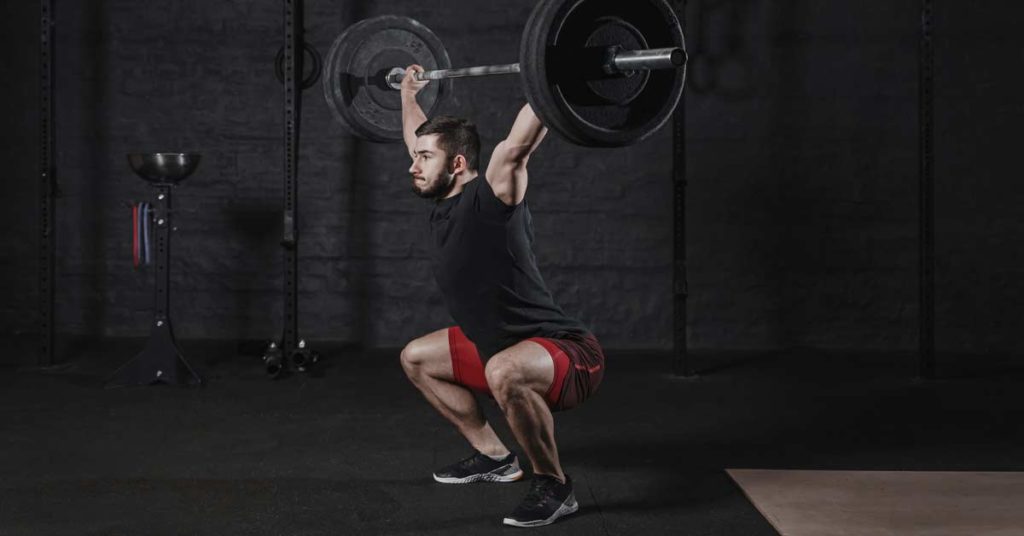
What is HIIT?
HIIT stands for High Intensity Interval Training and as the name implies, it consists of high intensity exercises each immediately followed by periods of recovery. This type of exercise offers powerful intensity to improve cardiorespiratory and muscular fitness but that’s not all there is to it. HIIT workout s have also been scientifically proven to be as effective and even more efficient than traditional steady-state endurance training at increasing your cardiovascular health, boosting athletic performance, increasing insulin sensitivity and increasing glucose metabolism, an essential component in burning fat.

One major benefit of HIIT is that it takes less time than regular cardio or endurance training for similar health benefits. The American College of Sports Medicine and the American Heart Association recommend 150 minutes of moderate-intensity exercise or 75 minutes of vigorous activity every week to improve overall health and fitness level. However, only 22% of the adults meets these guidelines. The biggest reason that individuals cite for not completing the recommended amount of exercise is due to a lack of time. HIIT can help you meet these requirements by combining high-intensity and low-intensity into a single workout.
Before you incorporate HIIT in your lifestyle, you should take this fitness test and check with your doctor if this workout routine is suitable for you
Beginner’s Protocols
1. Start easy and simple
If you have been living a sedentary lifestyle and haven’t built an aerobic base, then you should focus on low-impact exercises like walking for your first month before adding high-intensity high-impact workouts like sprinting. HIIT should be based on a foundation of low-intensity and moderate-intensity exercise. Your exercise routine should also be straight forward and simple because complexity dilutes the intensity by creating confusing. Fast-paced walking is a perfect exercise for true beginners because it allows you to practice interval training without worrying about form and injury. Remember: slow then fast, low intensity then high-intensity.
2. Build progressions
The concept of gradually increasing the stress on your body when exercising is known as Progressive Overload. As you progress through your workouts, you can gradually make the workouts harder based on your improvement. An easy way to remember this concept is by adjusting any one of the following three variables in the acronym FIT:

Frequency
- The number of intervals in the workout
- The amount of workouts in a week
Intensity
- The level of effort or difficulty of the workout session
- The intensity can be adjusted through speed, incline and resistance
Time
- The duration of the working intervals
- The duration of the resting intervals
- The total workout session
3. Stay consistent
Committing to a fitness regimen with consistency is important in achieving fitness results. Sticking to a regular exercise regimen will keep you feeling revived both physically and mentally. When you exercise with consistency, your muscles will develop gradually and your mind will experience reduced levels of stress and greater relaxation.
Three Forms of HIIT Exercises
1. Aerobic HIIT (cardio): Running, Cycling, Rowing, Stair Climbing, Jump Ropes, Swimming, Hill Repeats, Elliptical, and Walking.
2. Bodyweight HIIT (strength training): Bear Crawls, Box Jumps, Broad Jumps, Burpees, High Knees, Jumping Jacks, Lunges, Mountain Climbers, Push-Ups, Pull-Ups, Sit-ups, and Squat Jumps.
3. Resistance HIIT (weight training): Battle Ropes, Boxing, Bulgarian Bag, Kettlebells, Rope Climbs, Slam Balls and Weightlifting.

Three Steps to HIIT
1. Build a Foundation
First off, you have to build a foundation and practice proper form of the specific exercise you are incorporating to your workout regimen.
- Aerobic Endurance
By improving your endurance base, you will improve your muscle’s capability to support your daily activities and performance in sports and exercise. It will also help preventing injuries during HIIT because it will produce muscular strength and adaptations which improve your body’s ability to transport oxygen to your working muscles. Some exercises are inherently easier and have a lower impact on your body (i.e. power walking, elliptical, rowing), so you should build up your aerobic base using those exercises before moving to more high-impact forms of HIIT (i.e. sprinting).
- Proper Form
Using
proper form helps you work out more efficiently and also decrease the
likelihood of injury. When your form is improper, you might end up targeting
the wrong muscle groups. There are many videos searchable online that show
proper form for running, cycling, rowing, and other exercises. Form usually
breaks down during the later stages of a workout when your muscles are fatigued
and you are less focused. This can increase the risk of injury and so it is
important to perfect your form at moderate-intensities before moving on to
high-intensity exercises.
2. Structure the Workout
There are several research protocols that were designed to test the impact of HIIT. Each protocol followed a basic structure that included a warm-up, intervals, and then a cool-down with various durations. Here is the basic structure of a HIIT workout:
Warm-Up
Time: 3-5 minutes (or more) of low-to-moderate intensity exercise depending on your fitness level.
Note: Warm up by doing a low-intensity version of the specific exercise that you are going to do. You need to prepare your muscle for the intensity of the workout.
Intervals
Time: 6-10 sets of 60/60, 30/60, 30/30, 20/10 (Working Intervals/Recovery in seconds).
Note: You can adjust the amount of time for the working intervals and the resting intervals to make it easier or harder.
Cool-Down
Time: 3-5 minutes or more of low-intensity exercise depending on your fitness level.
Note: The cool-down is included in every high-intensity workout because your muscles will need to recover from the workout. You can generally cool-down by walking or stretching after your workouts.

3. Balance the Intensity
HIIT workouts are based upon a balance of high-intensity and low-intensity intervals. The intensity level will correlate to increases and decreases of your maximum heart rate (HRmax). You should first aim to do longer intervals at moderate-intensities (i.e. 60/60), then adjust to shorter intervals at high-intensities (i.e. 30/60, 30/30, 20/10).
High Intensity – High Intensity is the cornerstone of HIIT workouts. When ready, you should increase the intensity of the workouts during your working intervals so that your heart rate is around 80-95% of your HRmax. There are a few ways to increase the intensity of your workout:
- Increasing the speed (i.e. sprinting instead of running)
- Increasing the incline (i.e. uphill instead of flat)
- Increasing the resistance (i.e. heavier weights, weight vest or increased resistance on machine)
Low Intensity– You should decrease the intensity during your active resting intervals so that your heart rate should be around 60-75% HRmax. There are a few ways to decrease the intensity of your workout:
- Decreasing the speed (i.e. walking instead of running)
- Decreasing the incline (i.e. no incline)
- Decreasing the resistance (i.e. lighter weights, no vest and decreased resistance on machine)
Estimating HRmax– One way to estimate your HRmax is to take 220 and subtract your age from it The research articles regarding HIIT studied HRmax in various ranges. Here is a chart from the American College of Sports Medicine that will help you differentiate between your own high-intensity and low-intensity intervals. The chart also provides information relating to the Rate of Perceived Exertion (RPE) which is a subjective measure of how difficult the workout feels for you.
| Intensity | HRmax | RPE |
| Low (i.e. Walking) | 57-63% | Very light to fairly light |
| Moderate (i.e. ET) | 64-76% | Fairly light to somewhat hard |
| Vigorous (i.e. HIIT) | 77-95% | Somewhat hard to very hard |
| All-Out (i.e. Sprinting) | >95% | Very hard |
Beginner’s Routine (4-weeks)
The Beginner’s Routine has three HIIT workouts that will be completed three times per week (Mondays, Wednesdays, and Fridays) for four weeks. If you are an intermediate or advanced athlete, this will be too easy for you. You should adjust the intensity of the program to make it more difficult. Here are the three true beginner workout intervals:
- Power/Walk (60/60) – 7 sets of 60 seconds of power walking and 60 seconds of walking.
- Jog/Walk (30/60) – 6 sets of 30 seconds of jogging and 60 seconds of walking.
- Incline Jog/Walk (30/60) – 6 sets of 30 seconds of incline jogging and 60 seconds walking.
Note: you can choose any exercise that is more convenient and engaging for you.
Workouts
Beginner 1 – Power/Walk
| Workout | Details |
| Warm-Up | 3 minutes of walking at an easy pace |
| Intervals | 7 sets x (60 seconds of power walking / 60 seconds of walking) |
| Cool-Down | 3 minutes of walking at an easy pace and/or stretching |
| Total Time | 20 minutes |
Beginner 2 – Jog/Walk
| Workout | Details |
| Warm-Up | 3 minutes of walking at an easy pace |
| Intervals | 6 sets x (30 seconds of easy jogging / 60 seconds of walking) |
| Cool-Down | 3 minutes of walking at an easy pace and/or stretching |
| Total Time | 15 minutes |
Beginner 3 – Incline Jog/Walk
| Workout | Details |
| Warm-Up | 3 minutes of walking at an easy pace |
| Intervals | 6 sets x (30 seconds of jogging at incline / 60 seconds of walking) |
| Cool-Down | 3 minutes of walking at an easy pace and/or stretching |
| Total Time | 15 minutes |
Beginner’s Daily Schedule
| Monday | Tuesday | Wednesday | Thursday | Friday | Saturday | Sunday |
| 1 | Power/Walk | Rest | Jog/Walk | Rest | Power/Walk | Outdoors |
| 2 | Jog/Walk | Rest | Power/Walk | Rest | Jog/Walk | Outdoors |
| 3 | Incline Jog/Walk | Rest | Power/Walk | Rest | Jog/Walk | Outdoors |
| 4 | Incline Jog/Walk | Rest | Jog/Walk | Rest | Incline Jog/Walk | Outdoors |
Hit Timer App Recommendations

Rest Days
Although there are no scheduled workouts for Tuesdays, Thursdays, Saturdays and Sundays, you should participate in active recovery during your rest days. Active recovery means taking the stairs rather than the elevator at the mall or work, heading outdoors during the day for sunlight and Vitamin D, walking around the office building during a lunch break, basically anything that keeps you moving with a low-impact exercise at an easy pace which will allow your muscles to recover faster and decrease fatigue. Light activity helps your muscles recover fast after a workout because it promotes blood flow and the transportation of nutrients to the active muscle groups. Take advantage of your rest days and go outdoors!
Post-Workout Analysis
At the end of each workout, you can do a post-workout analysis to review if the workout was too easy or difficult. By doing this analysis, you will understand what is working for you and what can be changed. The four-week plan will guide your progression, but you are in control and can always adjust the variables that make these workouts more or less frequent, intense, and time consuming. The five questions in the post-workout analysis are:
- How did the workout feel from a scale of 1 to 10 (easy to hard)?
- Did I complete each interval as expected?
- Do I want to change the intensity level during the next workout? Why or why not?
- How will I change the intensity level during the next workout?
- What is my goal for today?

It is good idea to track this information in a journal, so you can see your progression and know whether you want to increase the intensity of the workout during the following week or go back to a lighter exercise instead.
Okay so now you started your journey to get your dream body – but did you know that working out on a regular basis can help you with your mental health as well? No? Click here!
Comments
0 comments

Trackbacks/Pingbacks